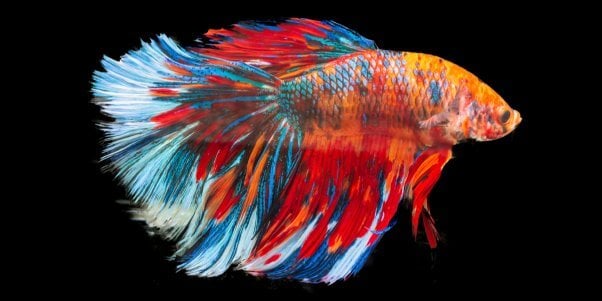Betta Fish Tank Configuration: A Step-by-Step Overview for Beginners
Betta Fish Tank Configuration: A Step-by-Step Overview for Beginners
Blog Article
Just How to Breed Betta Fish Efficiently: Professional Methods and Insights for Hobbyists Aiming To Broaden Their Betta Collection
Breeding Betta fish calls for a nuanced understanding of genes and environmental conditions, making it necessary for enthusiasts to come close to the process with both diligence and care. Producing an optimum reproduction setting, selecting the appropriate sets, and observing the intricacies of their courtship habits are fundamental actions that can significantly impact the outcome.
Comprehending Betta Fish Genes
Understanding the genes of Betta fish is crucial for effective reproduction, as it influences characteristics such as color, fin shape, and habits. Betta fish display a diverse array of shades and patterns, greatly established by their hereditary makeup.
In addition to pigmentation, fin morphology is one more significant aspect of Betta genetics (betta fish). The shape and dimension of fins are affected by different genes, consisting of those that figure out whether the fins are short, long, or veil-shaped. Recognizing these hereditary variations aids dog breeders predict the phenotypic outcomes of their spawn
Moreover, behavioral attributes such as aggressiveness and territoriality can also be affected by genetics. These actions play a crucial role in the reproducing process, as they can influence spawning success and the overall personality of the resulting fry. By thoroughly understanding these hereditary principles, dog breeders can make informed choices, ultimately boosting their breeding programs and attaining desirable outcomes.
Preparing the Breeding Setting
Producing an optimum breeding setting is important for the successful recreation of Betta fish. The primary step in preparing this atmosphere is to choose a proper reproduction storage tank, ideally varying from 5 to 10 gallons. This size enables sufficient swimming room and the establishment of areas. The container must be geared up with a heating unit to keep a stable temperature in between 78 ° F and 80 ° F, which is important for urging spawning habits.
Following, take into consideration using a sponge filter or an air stone to offer mild water flow without developing solid currents that can stress the fish. It is vital to set up plants or reproducing cones to supply concealing places and advertise convenience for the female during the spawning procedure. Drifting plants, such as Java moss or water sprite, can likewise produce a much more native environment while helping with bubble nest structure by the man.
Before introducing the reproducing pairs, make certain the water is conditioned and without damaging chemicals, such as chlorine or hefty metals. betta fish. Regular water changes should be carried out to preserve optimum water high quality, improving the opportunities of effective breeding. With these prep work in area, the breeding environment will support the health and well-being of both Betta fish
Picking Reproduction Pairs
Selecting the right breeding sets is crucial for accomplishing successful Betta fish recreation. Healthy Betta fish display vibrant shades, clear eyes, and active actions.
Character is another crucial factor to consider, as Betta fish are recognized for their aggressive nature. It is suggested to choose a male and woman that show compatible personalities to lessen stress throughout the breeding process. A tranquil male can urge a smoother courtship, while a female that is too hostile might disrupt the process.
Hereditary background likewise plays a significant function in the top quality of the children. Reproducing fish that are genetically varied can decrease the threat of genetic health problems and boost the overall vigor of the fry. It is advantageous to investigate the family tree of both the male and female, concentrating on preferable characteristics such as fin kind, check color scheme, and dimension.
The Reproduction Process
The breeding procedure of Betta fish calls for careful planning and interest to information to make certain a successful outcome. It is essential to prepare a suitable breeding storage tank, ideally a 5-10 gallon fish tank with a temperature level kept at 78-80 ° F. The container should be outfitted with a heating system, filter (preferably sponge kind to avoid strong currents), and lots of water plants for the female to Bonuses conceal.
When the atmosphere is set, introduce the chosen breeding pair to the storage tank, allowing them to adjust. Observe their behavior; the man will display sophisticated courtship rituals, including flaring his fins and constructing a bubble nest. If the female reveals rate of interest, she will present upright stripes suggesting preparedness for spawning.
When the woman is responsive, the pair will certainly involve in a mating welcome, during which the male fertilizes the eggs. Keeping optimum water conditions during this period is vital for the advancement of healthy and balanced Betta fry.
Caring for Betta Fry

Feeding Betta fry is crucial, as they call for a diet high in healthy protein. They can be fed infusoria or liquid fry food, transitioning to carefully crushed high-grade pellets as they expand. Feed little portions several times a day to motivate healthy and balanced growth without overloading the storage tank with leftover food.

As they grow, check their growth carefully and separate any aggressive individuals to avoid harm. By supplying a nurturing setting and correct nourishment, enthusiasts can efficiently elevate Betta fry into vibrant, healthy and balanced fish, ultimately enhancing their breeding endeavors.
Final Thought
Effective Betta fish reproduction advice needs thorough focus to hereditary selection, environmental conditions, and care for the fry. By understanding the genetics of Betta fish and preparing a suitable reproduction environment, enthusiasts can enhance the opportunities of producing lively, healthy spawn.
Report this page